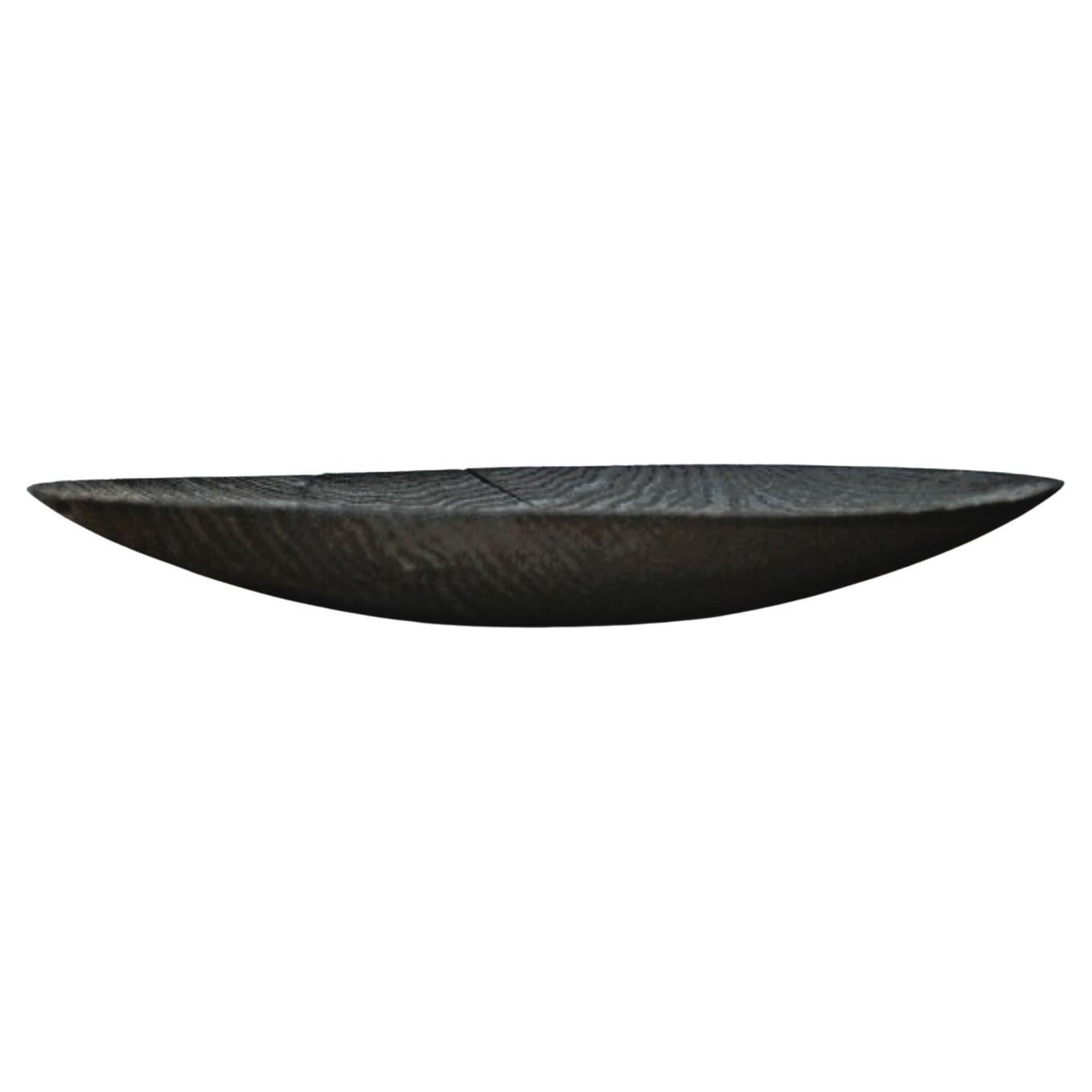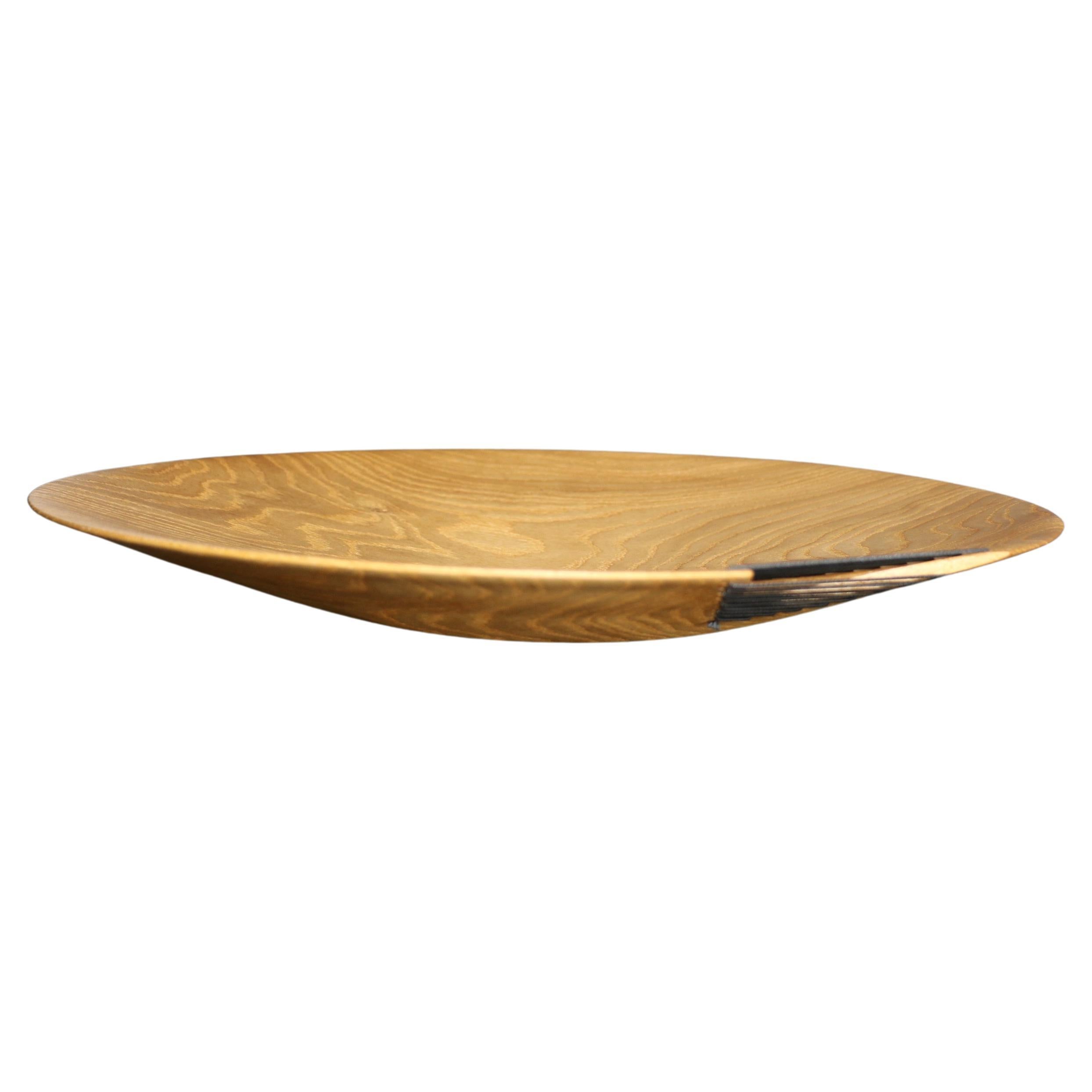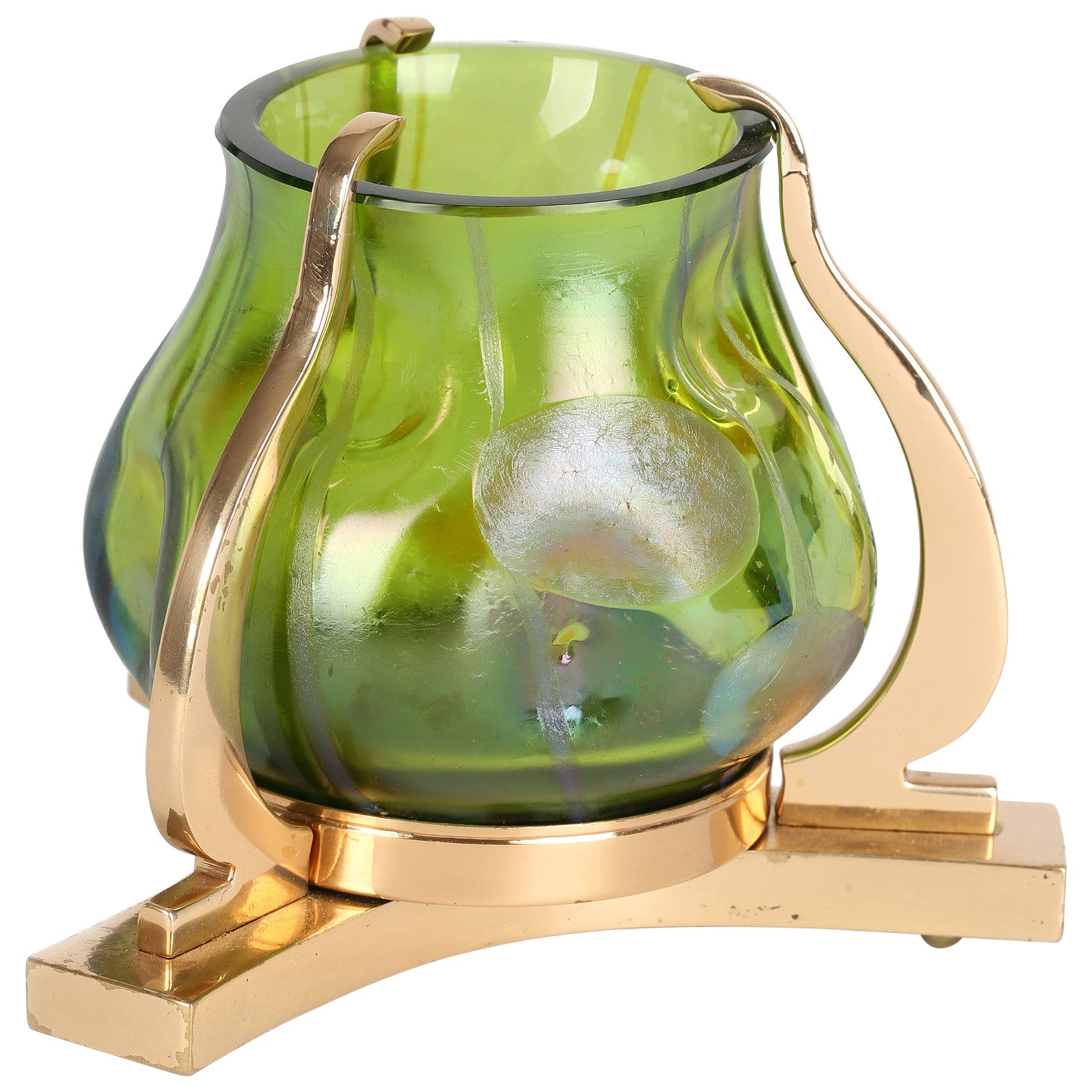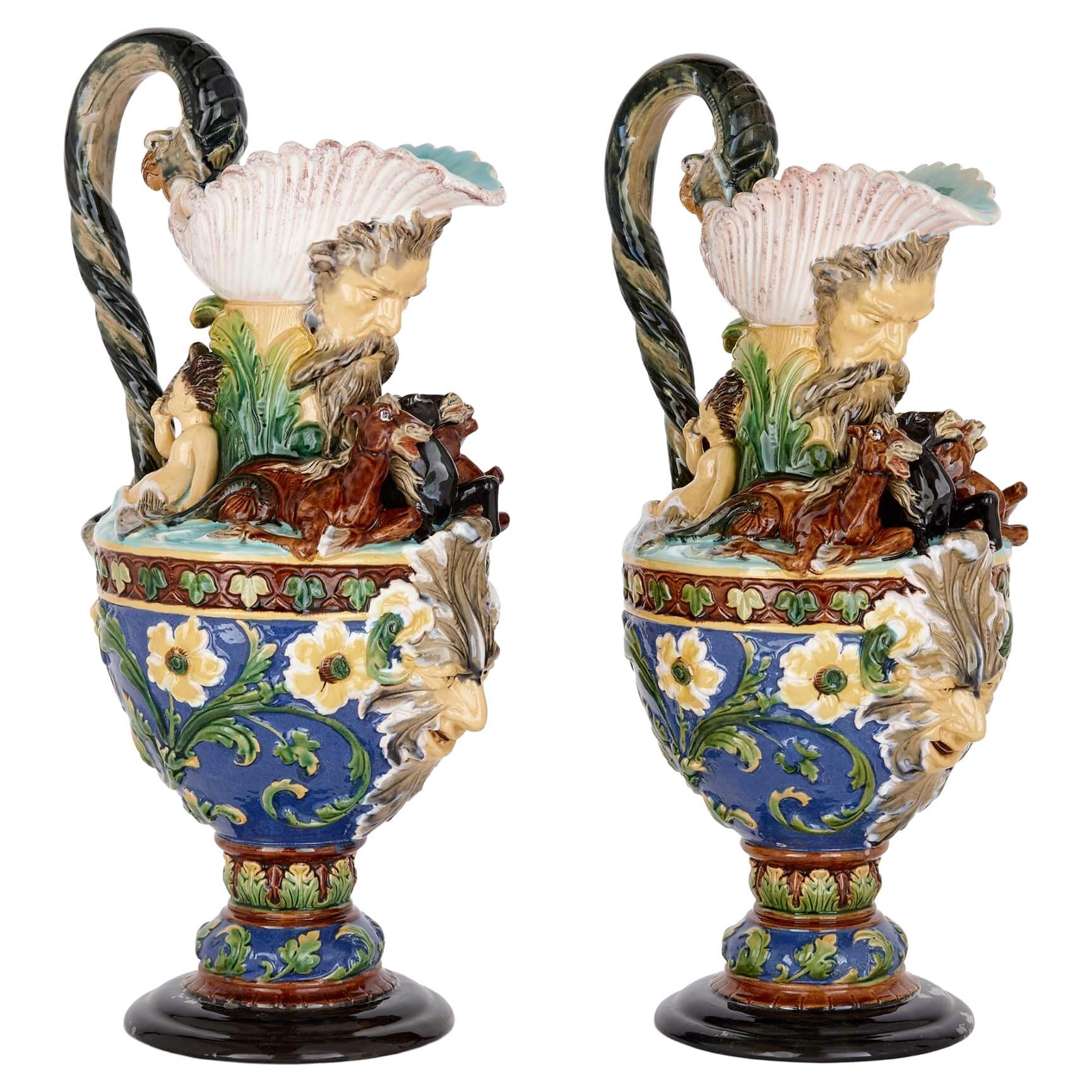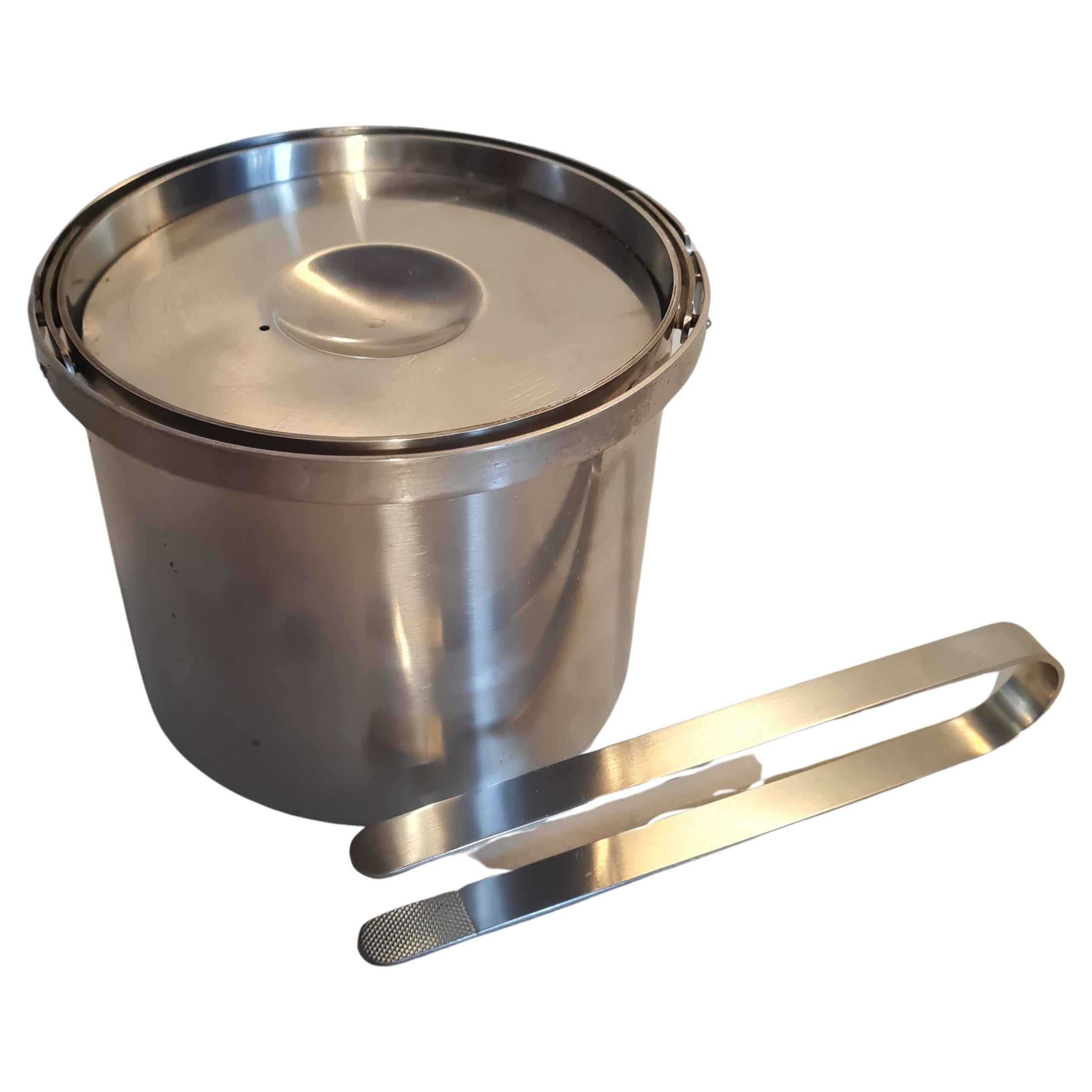Items Similar to Große Historismus-Prunkvase aus Kupfer und Bronze
Want more images or videos?
Request additional images or videos from the seller
Große Historismus-Prunkvase aus Kupfer und Bronze
About the Item
Seltene große Prunkvase in Kupfer und vergoldeter Bronze, wohl um 1870, möglicherweise Frankreich oder Russland.
Auf der versilberten Kupferguss-Kartusche Darstellung einer mit Gewand bekleideten Frau, einen mit Blumenkorb tragend, von unten von einem Putto beobachtend. Die Versilberung partiell berieben.
Rückseitig 2 Eindellungen.
- Dimensions:Height: 23.82 in (60.5 cm)Width: 11.82 in (30 cm)Depth: 9.85 in (25 cm)
- Materials and Techniques:
- Place of Origin:
- Period:
- Date of Manufacture:circa 1870
- Condition:Minor structural damages.
- Seller Location:Aachen, DE
- Reference Number:
About the Seller
New to 1stDibs
Joined in the past six months.
No Reviews Yet
Vetted Seller
These experienced sellers undergo a comprehensive evaluation by our team of in-house experts.
Established in 2013
1stDibs seller since 2024
Typical response time: 1 hour
- ShippingRetrieving quote...Ships From: Aachen, Germany
- Return PolicyA return for this item may be initiated within 14 days of delivery.
More From This SellerView All
- Couchtisch PEGASUS aus Glas und Mahagoni von StresslessBy Ekornes StresslessLocated in Aachen, DESeltener Couchtisch aus Mahagonifarbenem Schichtholz von STRESSLESS, Norwegen aus den 80er Jahren. Die aufgelegte, einseitig satinierte Glasplatte ist original und hervorragend erha...Category
Vintage 1980s Norwegian Coffee and Cocktail Tables
MaterialsGlass, Wood
- Große Prunkschale aus Glas mit geschliffenen Tiermotiven 38cmLocated in Aachen, DEGroße prächtige Obstschale mit umfänglich eingeschliffenen Motiven der Flora und Fauna (Hirsche, Hund, Hase, Bäume, Sträucher). Das Schliffbild ist deutlich (!) detaillierter / fein...Category
Antique Early 1900s German Glass
MaterialsGlass
- 3x Wandleuchte aus Palisander und Glas von Uno & Östen Kristiansson für Luxus SvBy Uno & Östen KristianssonLocated in Aachen, DEUm 1955, zylindrischer Glaskörper mattiert 30x10cm, auf Rosenholz-Gestell, eine Fassung E27 Uno & Östen Kristiansson (Designer*in) Luxus Vittsjö (Hersteller*in) 2 der Leuchten sind...Category
Vintage 1950s Swedish Scandinavian Modern Wall Lights and Sconces
MaterialsMilk Glass, Rosewood
- Couchtisch aus Travertin 70er JahreLocated in Aachen, DETravertintisch Couchtisch aus Travertin 70er Jahre 60x60cm 3-teilig,unbeschädigt, sauber, die 2 Füße beliebig stellbarCategory
Vintage 1970s Sofa Tables
MaterialsTravertine
- Erotisches Ölgemälde , 18. Jahrhundert "Amymon und Satyr"Located in Aachen, DEÖlgemälde auf Leinwand, doubliert, im Stil der Lombardischen Schule, 18. Jahrhundert Das Gemälde ist betitelt: "Amymon wehrt sich gegen die Annäherungsversuche eines Satyrs". Es ha...Category
Antique Late 18th Century Paintings
MaterialsCanvas
- HP Hansen Denmark Highboard aus Teakholz, 1960er JahreBy H.P. HansenLocated in Aachen, DEDänisches Mid-Century Highboard aus massivem Teakholz von HP Hansen. Es verfügt über 2 große Schiebetüren, eine Klapptür und 4 Schubladen, die viel Stauraum bieten. Auf der Rückseit...Category
Vintage 1960s Danish Mid-Century Modern Sideboards
MaterialsTeak
You May Also Like
- Große handgefertigte, gedrechselte Yakisugi-Schale aus EicheBy Christa & Christoph BraunLocated in Berngau, DEHandgefertigte, gedrechselte Yakisugi-Schale aus einem Stück Eiche. Die dekorative Schale wird in unserem Atelier in Bayern kreiert. Nach dem groben Zuschnitt wird der Holzklotz durc...Category
2010s German Arts and Crafts Decorative Bowls
MaterialsOak
- Große handgefertigte, gedrechselte Schale aus einem Stück EicheBy Christa & Christoph BraunLocated in Berngau, DEHandgefertigte, gedrechselte Schale aus einem Stück Eiche. Die dekorative Schale wurde in unserem Atelier in Bayern kreiert. Nach dem groben Zuschnitt wurde der sorgfältig ausgewählt...Category
2010s German Arts and Crafts Decorative Bowls
MaterialsOak
- Große über 2m Massivholz Kranich Skulptur aus Teak, 1960erLocated in Mainz, DEGroße über 2 Meter große Massivholz Kranich Skulptur. Die Skulptur wurde als Einzellstück in Handarbeit gefertigt. Die Figur sehr schwer da aus massiven Holz. Leider scheint die Skul...Category
Vintage 1960s German Mid-Century Modern Animal Sculptures
MaterialsWood
- Loetz Streifen Und Flecken Brass Mounted Art Glass VaseBy Loetz GlassLocated in Bishop's Stortford, HertfordshireStunning Bohemian Secessionist brass mounted glass vase with 'Streifen und Flecken' decoration by Loetz and dating from around 1900. The thickly made green glass vase has a dimpled b...Category
Antique Early 1900s Austrian Art Nouveau Vases
MaterialsBrass
- Pair of Large Majolica Ewers by Wilhelm Schiller Und SöhneBy Wilhelm Schiller & SonLocated in London, GBA pair of large majolica ewers by Wilhelm Shiller und Söhne Bohemian, Late 19th Century Measures: Height 45cm, width 23cm, depth 18cm With spouts fo...Category
Antique Late 19th Century Czech Bohemian Vases
MaterialsMajolica
- Bohemian "Flux" vase by kuk Fachschule fur Keramik und Verwandte KunstLocated in Chicago, USBOHEMIAN FLUX: A VASE, kuk Fachschule für Keramik und Verwandte Kunstgewerbe, Turn-Teplitz, c. 1905; the ceramic vase with a dark underglaze ground has a matte orange peel overglaze in ochre, apricot, lapis and celadon; the shape of the vase resembles a Japanese Saki bottle with the addition of four long and slender handles at the top third; incised before firing on the base in script lettering,“P.W.”, stamped before firing with the Fachschule mark and 73, and marked “G2.” in black ink; the vase measures: 13” high. Flux- continuous moving, a glazing method, fusion- the artist who produced this remarkable vase has presented a profoundly poetic and technical meditation on this subject. Moving way beyond the pursuit of creating only functional objects, the student ceramists at Fachschule Teplitz had ingrained in them the Europeans’ fascination for Japanese objects “from the floating world” and the design aesthetic known as Japonisme. Truly modern interpretations of Japonisme had begun to evolve into an internalizing of the aesthetic principles and a shift away from imitation of Japanese style applied to a Western format. This vase is noteworthy in that it illustrates this important Modernist shift in European ceramics. The elements of the saki bottle can be divided into three key components which taken as a whole create a rather feminine line. In keeping with this approach, the Fachschule student presents a slender bare neck, like décolletage, which flares ever slightly and then narrows to a high waist before voluptuously widening down and terminating gracefully to a round base. The ceramist gives special emphasis to pleasing proportions and the complementary relationship to the number 3; the measurement at the widest section of the vase equals the same distance from that point up to where the bottoms of the handles join to the body of the vase as well as the full arms’ length. Instead of inscribing the vase with Japanese calligraphy denoting a saki shop, the student takes a radically modern approach by attaching the vase with four handles. And yet, this act is every bit a form of written identification. The arms are the embodiment of the idea of flux in that they are a substance applied to a surface by the welding together to promote their union. The handles serve a new and surprising function. They are carriers of a concept. Fluidity- flux -can be created when an artist joins disparate elements into a harmonious whole. Flux is also a substance used to promote the fusion of minerals and metals and a term describing ceramic glazing. The presence of silica in glazes creates a glassy finish when fired at high temperatures. Matte glazes result from the presence of crystals under the surface and the balance between silica, flux and alumina in the glaze materials. By deliberately under-firing this vase and playing with a combination of additives forming the flux glaze, the end result appears matte and textured. The orange peel quality and alluring color palette are transformative. The effect evokes a waterfall or another continuous moving flow of water like a stream - in flux. So not only does this artist take a Meiji Period saki bottle and the aesthetic tenets of Japonisme as the formal and theoretical points of departure, the artist infuses the work with the symbolism of skill itself where artistic mastery as the embodiment of flux becomes the subject to ponder. As a fully realized and beautifully rendered piece, the vase attests to the artistic prowess of its creator. No longer a mere student working in the shadows of the teacher and no longer simply imitating or replicating past styles, this emerging artist shows the complete fluid transfer from student to master ceramist. Seen in this light, the vase represents a significant and pivotal achievement in Modern European ceramic ware. Fachschule für Keramik und Verwandte Kunstgewerbe (the Imperial School for Ceramics and Associated Applied Arts, 1875-1917) was a powerhouse of the ceramics industry. Located in the Turn-Teplitz region of Bohemia near the German border of what is today The Czech Republic, this was Europe’s largest pottery center in the first part of the 20th century. The school played an integral role in the center’s internationally regarded success as it provided the foundation of sourcing and training new talent for noted local manufacturers such as Amphora. It was at the Fachschule that master artists from these local ceramics houses enjoyed teaching and lecturing posts, and in true synergistic spirit, the big ceramics...Category
Antique Early 1900s German Art Nouveau Vases
MaterialsEarthenware
Recently Viewed
View AllMore Ways To Browse
White Rustic Ceramic Vases
Blue And White Porcelain Dragon Vase
24 Tall Vase
Wisteria Vase
French Imari Porcelain
Arthur Andersson Wallakra
Golden Snail
Carlo Moretti Limited Edition
Stoneware Ginger Jar
Carlo Moretti Piccoli Limited Edition
Emanuel Beranek Vase
Russian Cloisonne Vase
Manz Relief
Antique Cloisonne Bird
Vintage Green White Black Swirl Vase
Atelier Vf
Hua Yan
Ruby Gilded Bohemian Glass With Raised Painted Flowers
